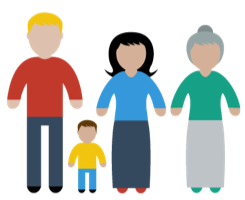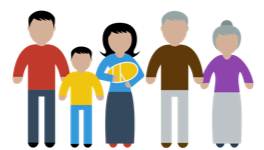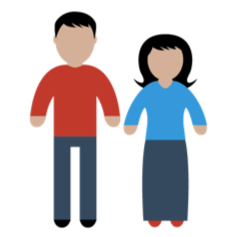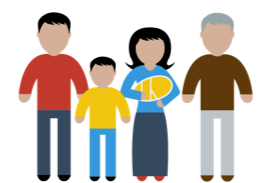
There are increasing interethnic marriages and relationships in New Zealand society (Didham & Callister, 2014). Rates of interethnic marriage are significantly higher in Asian populations in the 1.5 generation and among the New Zealand born than in the overseas born (Didham & Callister, 2014). The term 1.5 generation in this resource refers to people who were born overseas and relocated to New Zealand at a young age.
It is important to remember that maintaining ethnic belonging is central to the identity of many Asian women in interethnic marriages or relationships. Being in a cross-cultural marriage does not preclude the pressure from family and community to observe traditional birthing, postnatal and parenting/grandparenting practices. New Zealand born and 1.5 generation women may be living with mothers or mothers-in-law who have an expectation that their daughter or daughter-in-law will follow their cultures’ traditional child rearing practices.
Traditional practices during birth and the postnatal period are used worldwide in countries and regions such as China (Lau, 2009), Myanmar (Kokanovic, 2011; 2012), Korea (Kim, 2015), India (Goyal, 2006; Wells & Deitsch, 2014) and beyond. When families migrate, traditional birth, postnatal and parenting practices are challenged by western models. Older family members in New Zealand are likely to maintain traditional beliefs and parents may struggle with a lack of decision-making power (Lau & Wong, 2008).
Specific postnatal traditions differ by ethnicity, but they are all generally female-oriented with family-centric support networks aimed at ensuring the mother and baby’s health. Typically, during the first month after birth the woman is under the care of her mother or mother-in-law who helps to restore her health and strength as quickly as possible after birth, for example, by providing her with good nutrition, taking care of the older children, and doing the housework.
Postnatally, the traditional practices of rest, abstaining from housework, having a good diet, and avoiding fatigue and stress are intended to support lactation. In traditional cultures, the first month is of fundamental importance to the survival of the new mother and her baby, therefore the postpartum period is as important as the pregnancy.
Cultural expectations and conflicts
Older family members’ expectations of what constitutes healthy practices in the postnatal period may conflict with the advice women receive from their midwives/Well Child Tamariki Ora (WCTO) nurse and other child health service providers (Guo, 2013).
Older family members who support the woman often experience culture shock as their experiences of pregnancy, childbirth, postpartum and child rearing may not be understood by maternity service providers (Guo, 2013).
In Guo’s (2013, p.309) study of migrant Chinese mothers in New Zealand, a midwife successfully included older family members by providing the kind of support that was acceptable to the woman and her husband. During a postnatal home visit, the midwife asked the woman and her husband how the woman’s mother would help them during the postpartum period. The couple was worried that the woman’s mother would expect the woman to observe the practice of the ‘sitting month’, and that she would be making decisions about breastfeeding and how they should parent their baby.
To overcome the potential cross-cultural communication barriers between herself and older family members, and to avoid conflict between the grandparents and parents, the midwife recommended that the parents interpret what was being discussed for the grandparents:
I can actually sit here with you guys and baby and your mum and dad and you can translate for me. And sometimes when I have you translate for me they kind of like get to understand a bit more about how things are for you here. Okay?
(Guo, 2013, p.310)
By doing this, the older family members felt included and they had an opportunity to understand the roles and practices of New Zealand maternal and child health services. Most importantly, the older family members felt respected and involved in decision-making rather than being excluded from the communication between the midwife and the couple.

Suggested approaches:
- Recognise that there may be components of traditional practices that migrant women wish to follow or to adapt, and that these practices may be helpful for the woman and her baby.
- Health practitioners can act as cultural mediators. Health practitioners can discuss the need to include extended family members when engaging with parents. Family harmony can be maintained by acknowledging the important role of older family members and the relationship between the care-giver and the extended family, and by including them in decisions about the child’s care. Additionally, health practitioners can act as mediators between older family members and parents. The cultural practices that sound useful can be considered by parents and can be modified to ensure that the older family members feel accommodated.
- Connect women to networks of other women of the same ethnicity. When women are unfamiliar with the New Zealand maternal and child health system, networking with other migrant women is helpful, in particular when women have limited English language skills. For example, Asian communities often access online forums to share ideas and perspectives on childbirth and parenting. For first-time mothers, the role of maternity-care/WCTO service providers is critical in linking women to child health services and supports, for example, some Plunket groups offer ‘coffee groups’ for specific ethnic groups in order to encourage networking and support for new mothers.

![]()





